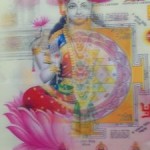Heart practice: On the Adoration of the Senses – II
The worship of oneself must be done with elements that are pleasing to the senses.
Yoginīhṛdaya, 3.8a
Let my idle chatter be the muttering of prayer, my every manual movement the execution of ritual gesture, my walking a ceremonial circumambulation, my eating and other acts the rite of sacrifice, my lying down, prostration in worship, my every pleasure enjoyed with dedication of myself, let whatever activity of mine be some form of worship of you.
Saundaryalahari, 27
In the previous post in this series I gave a brief discussion on what could be thought of as a ‘tantric’ perspective on the senses. Now I will move onto describing the “short form” of this practice, which takes the form of a short puja sequence. Continue reading »

